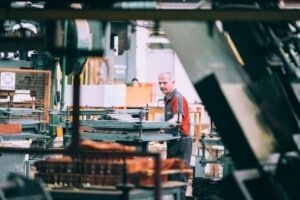Can Anything Be Done To Make Manufacturing More Sustainable?

If we want to make the modern
economy more sustainable
, we need to address inefficiencies in manufacturing. For more than 100 years, manufacturing has been a poster child for environmental challenges. The “dark satanic mills” of the 19th century fired the popular imagination and led many people to believe that manufacturing was humanity’s greatest sin.
The truth is a little more nuanced than that. Modern factories are actually incredibly clean and careful with their waste production. Heavy-duty chemical pallets for industrial use are often sustainable in their materials, too. But you could be doing more. You could be looking at the materials you choose with more depth. Businesses are doing plenty to ensure that they are sustainable right now. However, they could go further. In this post, we take a look at all the things that manufacturers could do to make their operations more sustainable .
Save Time
Sometimes simply speeding up your operations or running a cycle faster without using more energy can result in less impact on the environment . If you can get more done in a shorter amount of time, then you can shut down your systems and save on power. In a large-scale production facility, you may be able to reduce how many machines you need to turn out the same quantity of products.
Share Power Between Machines
Factories often lose a lot of energy in the form of heat. When machines spin up to their full-cycle speed, they either dissipate energy into manufactured products or in the form of heat as they wind down. The latter is problematic because it represents wasted energy.
However, power-sharing among machine tools is becoming more popular. For instance, seaming machines and cutting machines often share power through a single wire. By sharing servos and other opponents that contain kinetic energy the system can redistribute power between different functions when required by the process itself. This is a little bit like how hybrid cars take waste energy from braking and use it to charge the engine.
Choose Your Vendors Wisely
Another thing you can do to make your enterprise more sustainable is to choose your vendors wisely. Find a metal component manufacturer that focuses on reducing their carbon emissions and waste. Look for vendors who actively promote their green credentials.
Reduce Or Eliminate Pollution
Consumers are becoming increasingly educated on the environmental effects of the production of certain materials. They will often reject consumer items made according to manufacturing processes that generate potentially damaging byproducts. For instance, consumers are interested in machinery that uses as little coolant as possible or in manufacturing processes that reduce the number of offcuts.
Recycle More
Recycling has become a major issue at trade shows and conferences. It is no longer acceptable for companies to fill giant hoppers with waste material and then send them to landfills. Consumers now want them to account for all of the energy that they use in their production processes, not just the energy cost of material that goes directly into products.
In many cases, manufacturers are addressing this issue by bringing recycling facilities on-site . By moving facilities in this way, they are reducing the energy costs associated with transporting items large distances, cutting down on energy use even further.


